Tummy Tuck Operation (Abdominoplasty)
Tummy tuck surgery, also known as abdominoplasty, removes excess fat and skin and, in most cases, restores weakened or separated muscles creating an abdominal profile that is smoother and firmer. This operation increases patient's quality of life, self-esteem, self-image and improves his or her confidence in sexual encounters.
A flat and well-toned abdomen is something many of us strive for through exercise and weight control. Sometimes these methods cannot achieve our goals.
Even individuals of otherwise normal body weight and proportion can develop an abdomen that protrudes or is loose and sagging. The most common causes of this include:
- Aging
- Heredity
- Previous pregnancies
- Prior abdominal surgery
- Significant fluctuations in weight
Classification of Sagging Abdomen and Treatments Based on the Excess Skin and Fat
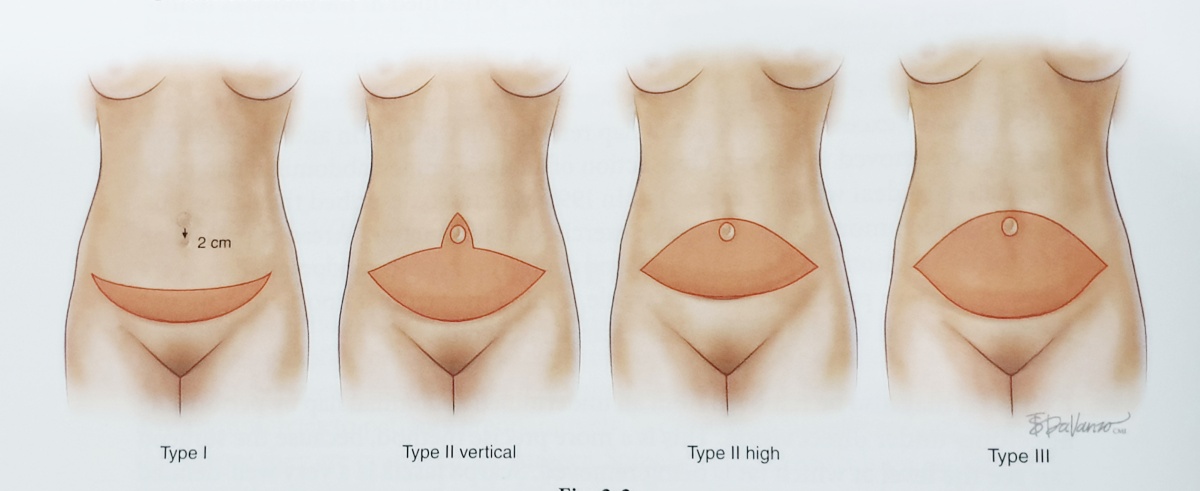
Type I -> Mini-Tummy Tuck
Type II and III -> Full Tummy Tuck
Classification Based on Location and Degree of Rectus Muscle Separation
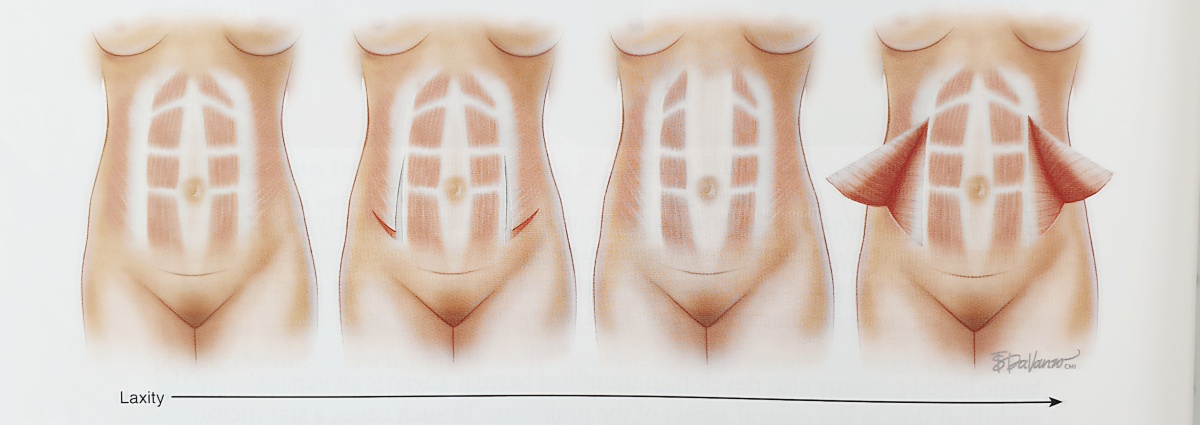
What tummy tuck surgery can't do?
A tummy tuck is not a substitute for weight loss or an appropriate exercise program.
Although the results of a tummy tuck are technically permanent, the positive outcome can be greatly diminished by significant fluctuations in your weight. For this reason, individuals who are planning substantial weight loss or women who may be considering future pregnancies would be advised to postpone a tummy tuck.
A tummy tuck cannot correct stretch marks, although these may be removed or somewhat improved if they are located on the areas of excess skin that will be excised.
Who is a good candidate for tummy tuck surgery?
A tummy tuck is a highly individualized procedure. You should do it for yourself, not to fulfill someone else's desires or to try to fit any sort of ideal image.
In general, you may be a good tummy tuck candidate if:
- You are physically healthy and at a stable weight
- You have realistic expectations
- You are bothered by the appearance of your abdomen
- No previous surgical scars at upper abdomen
- No severe underlying diseases such as uncontrolled DM or hypertension or heart disease
-
Mini-tummy tuck
.png)
.png)
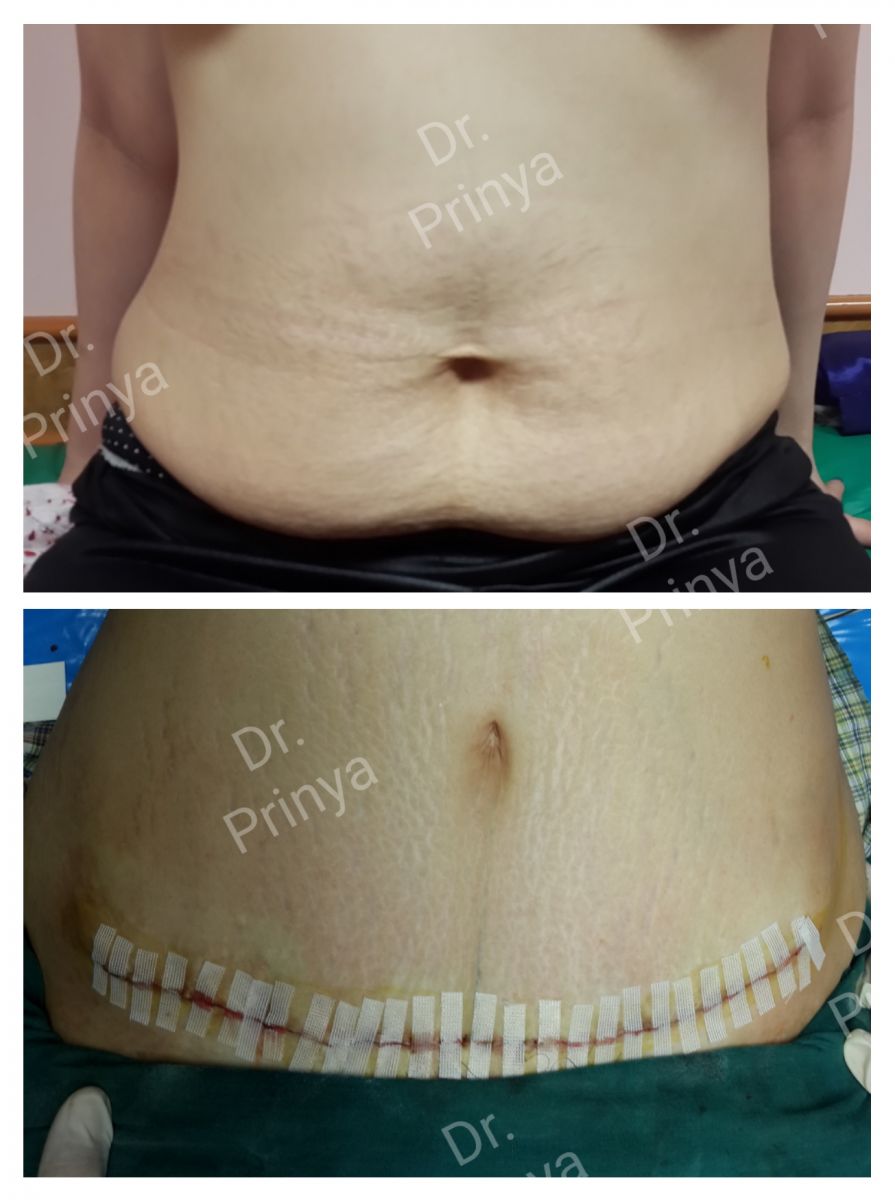
.png)
Full-tummy Tuck
.png)
.png)
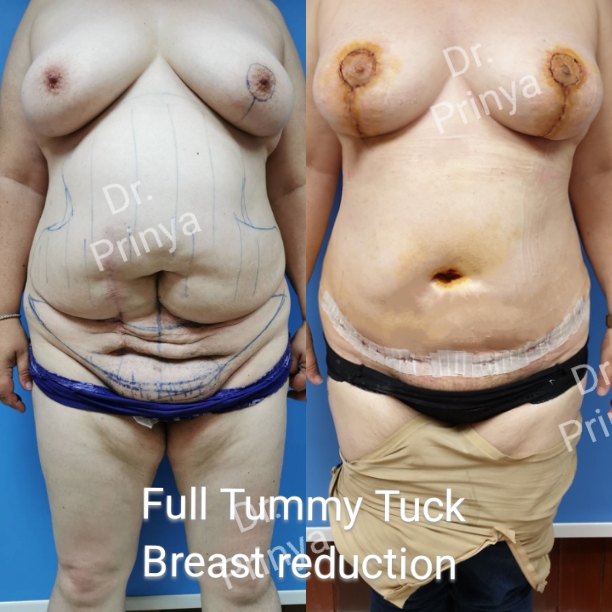
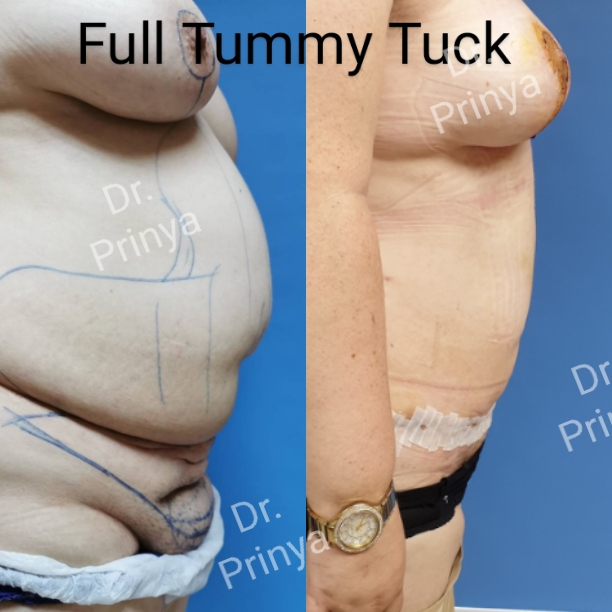

.png)
.png)
.png)
.png)
.png)
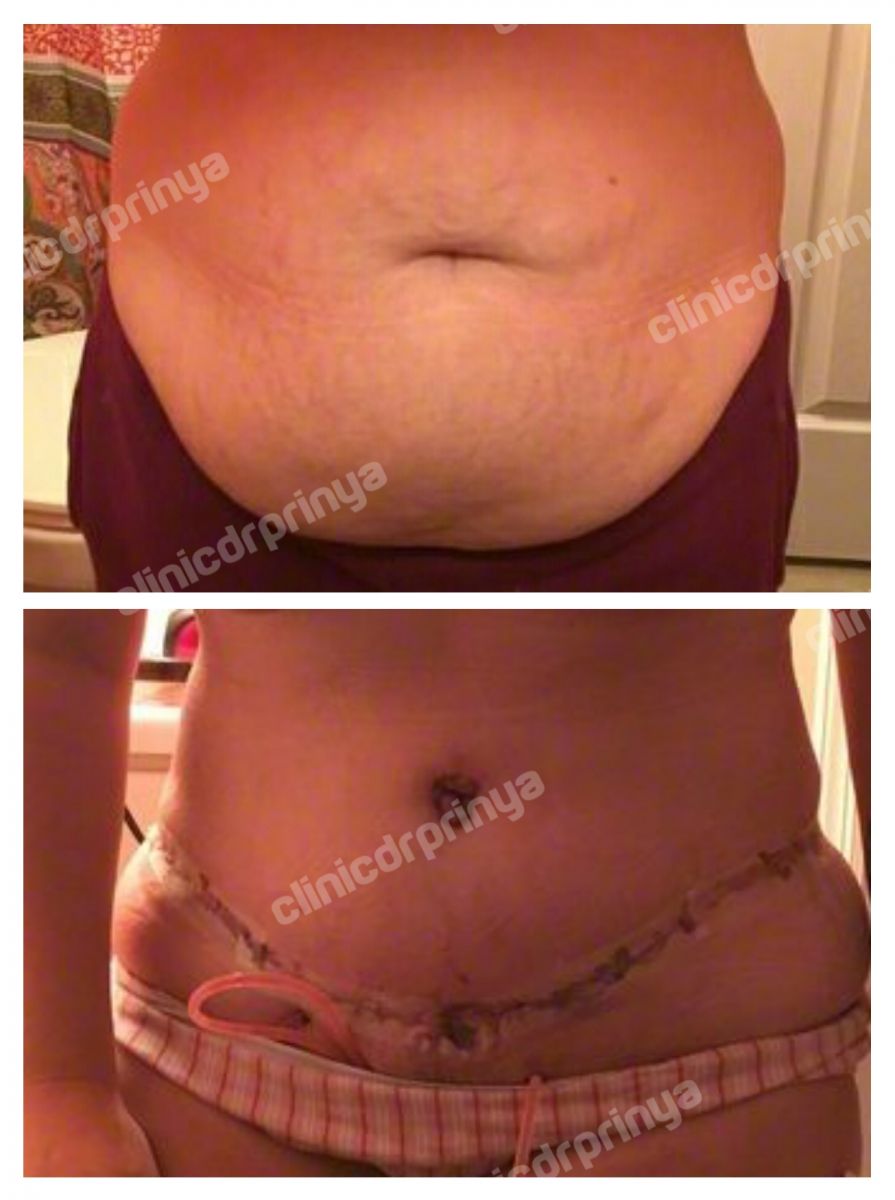
.png)
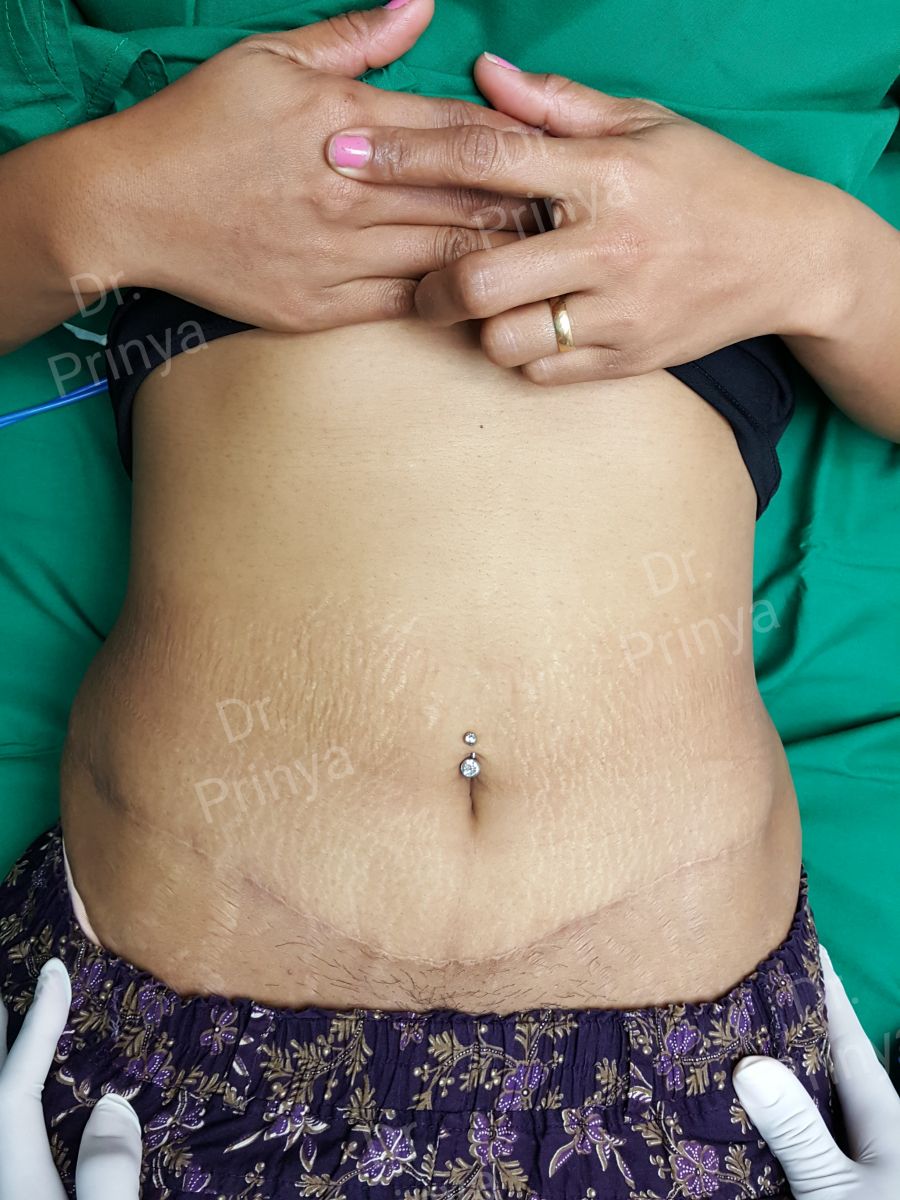
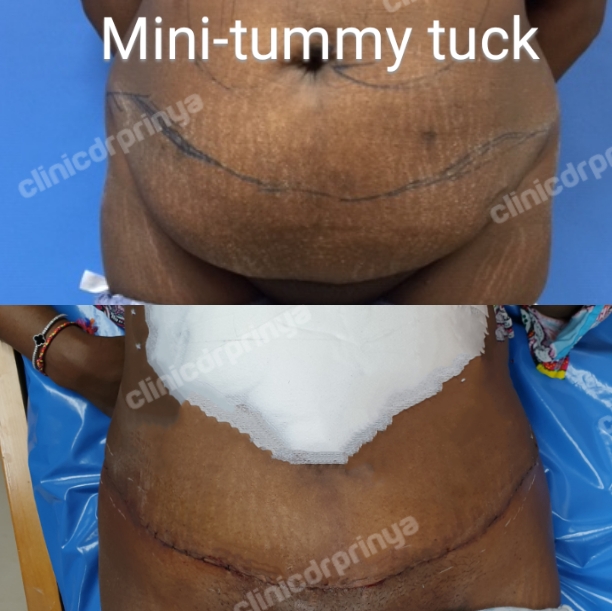
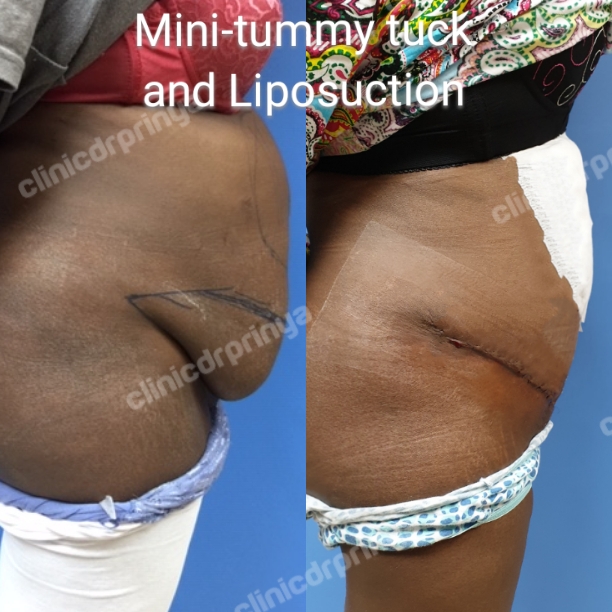
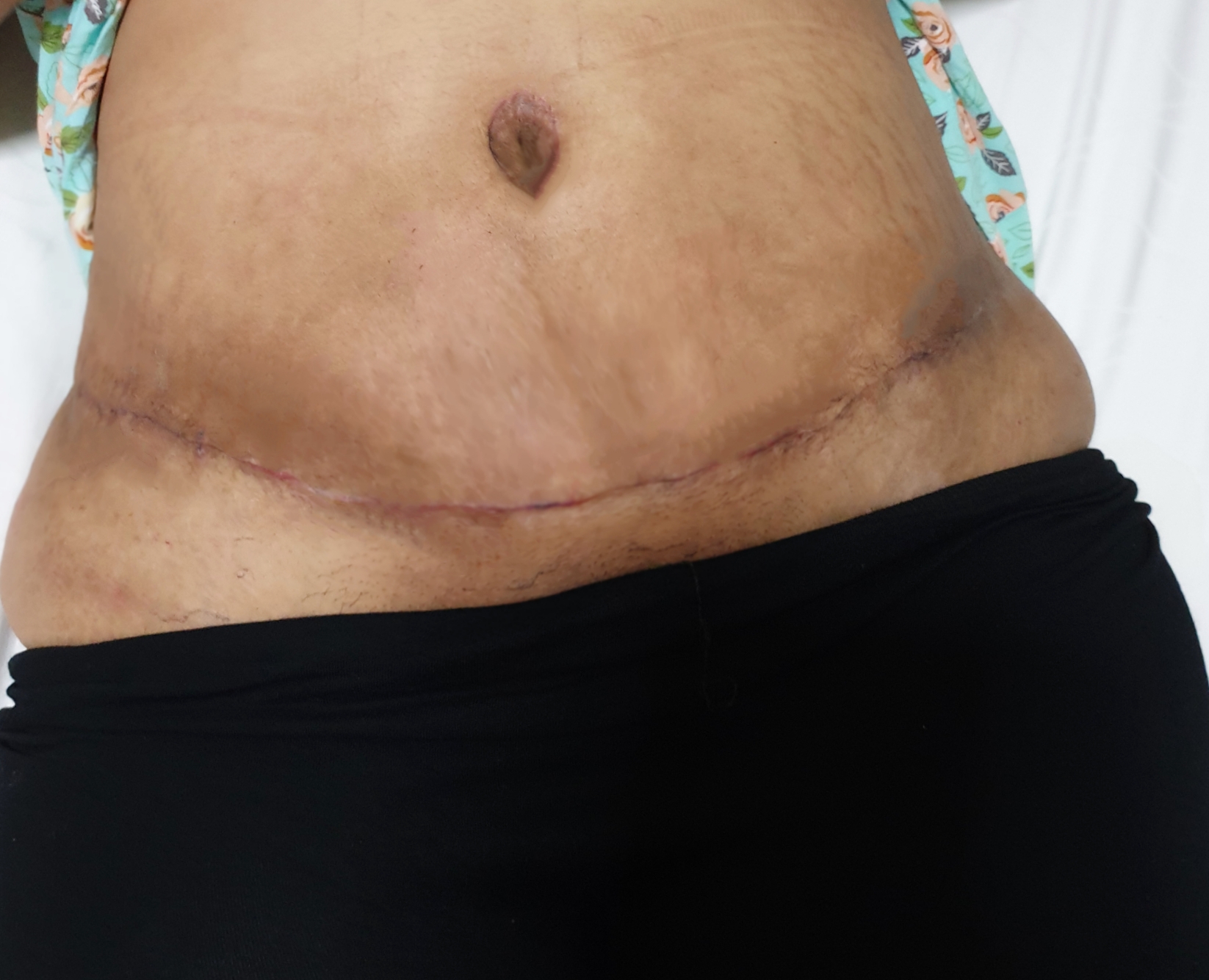
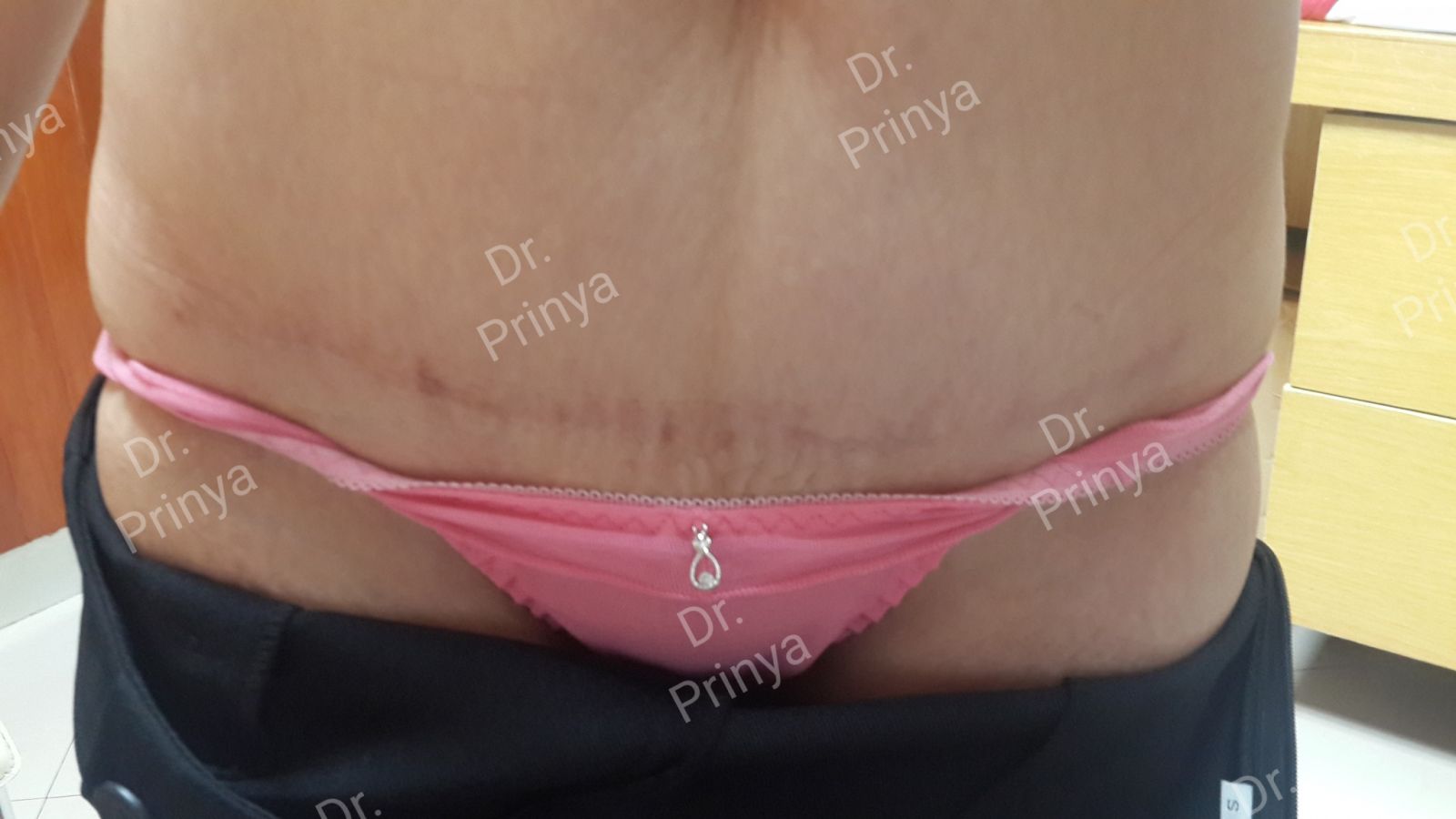
.png)
.png)
.png)
.png)
.png)
.png)
.png)
.png)
.png)
.png)
.png)
.png)
.png)
.png)
What are the risks of tummy tuck surgery?
The decision to have plastic surgery is extremely personal, and you’ll have to decide if the benefits will achieve your goals and if the risks and potential complications of tummy tuck surgery are acceptable.
You will be asked to sign consent forms to ensure that you fully understand the procedure and any risks.
Tummy tuck risks include:
- Anesthesia risks
- Bleeding (Hematoma)
- Infection
- Fluid accumulation (seroma)
- Poor wound healing
- Numbness or other changes in skin sensation at lower abdomen
- Skin discoloration and/or prolonged swelling at lower abdomen
- Unfavorable scarring (Hypertrophic scar or Keloid)
- Recurrent looseness of skin
- Fatty tissue found deep in the skin might die (fat or flap necrosis)
- Deep vein thrombosis, cardiac and pulmonary complications
- Possibility of revisional surgery
How should I prepare for a tummy tuck?
In preparing for tummy tuck surgery, you may be asked to:
- Get blood testing (CBC and fasting blood sugar), chest X-ray and electrocardiography (EKG) for medical evaluation
- Take certain medications or adjust your current medications
- Stop smoking 1-2 weeks before and after operation
- Stop aspirin, if you are taking, for 1 week before and after operation as they can increase bleeding
A tummy tuck may be performed in an accredited office-based surgical facility, licensed ambulatory surgical center or a hospital. If your tummy tuck is performed on an outpatient basis, be sure to arrange for someone to drive you to and from surgery and to stay with you for at least the first night following surgery.

.png)
.png)
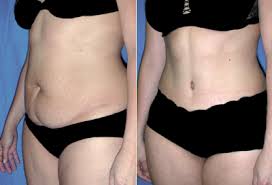
.png)
.png)
.png)
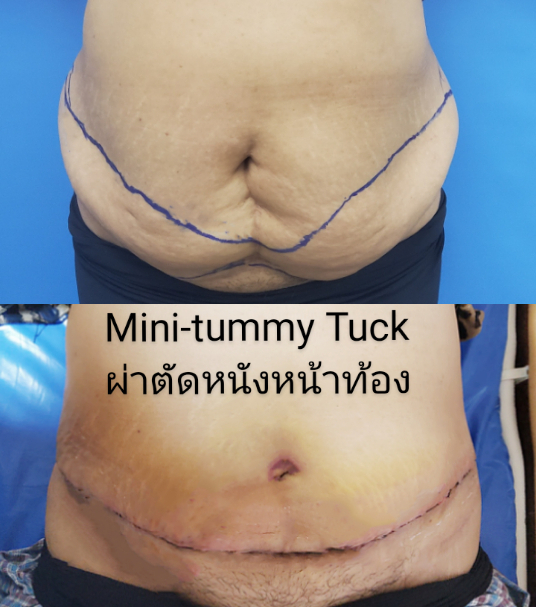
.png)
.png)
.png)
.png)
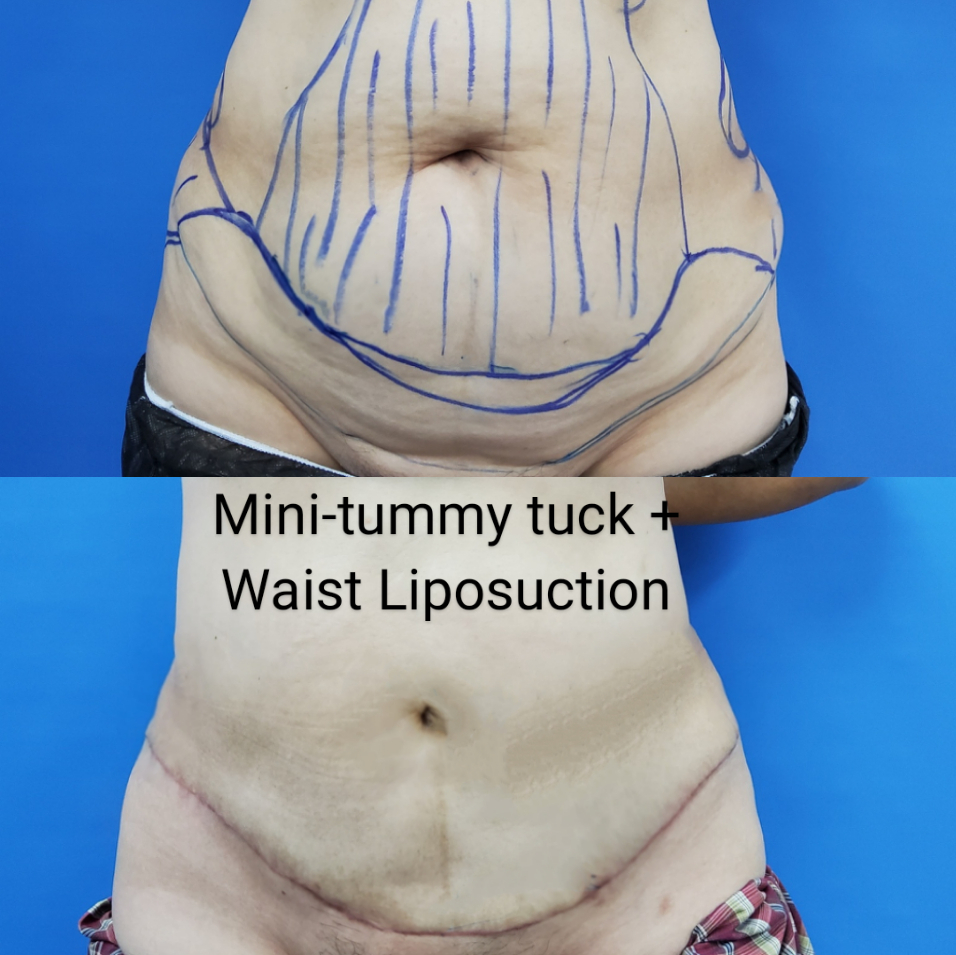
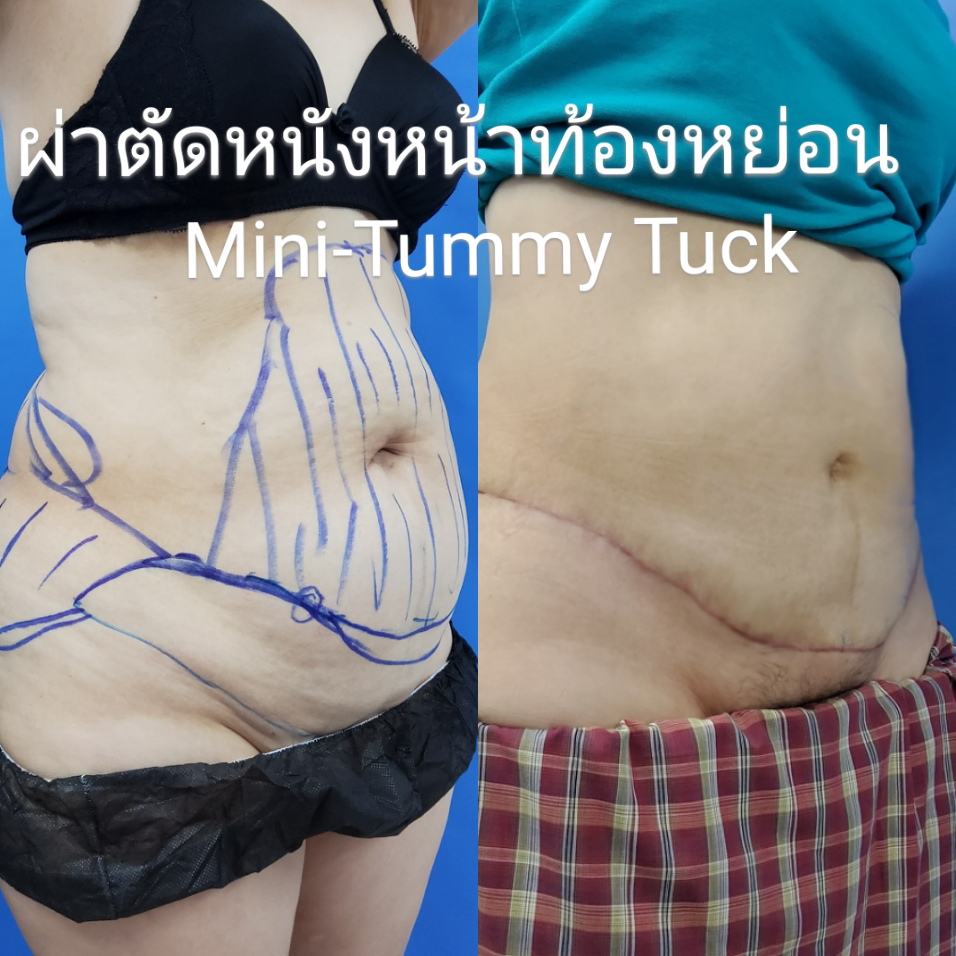
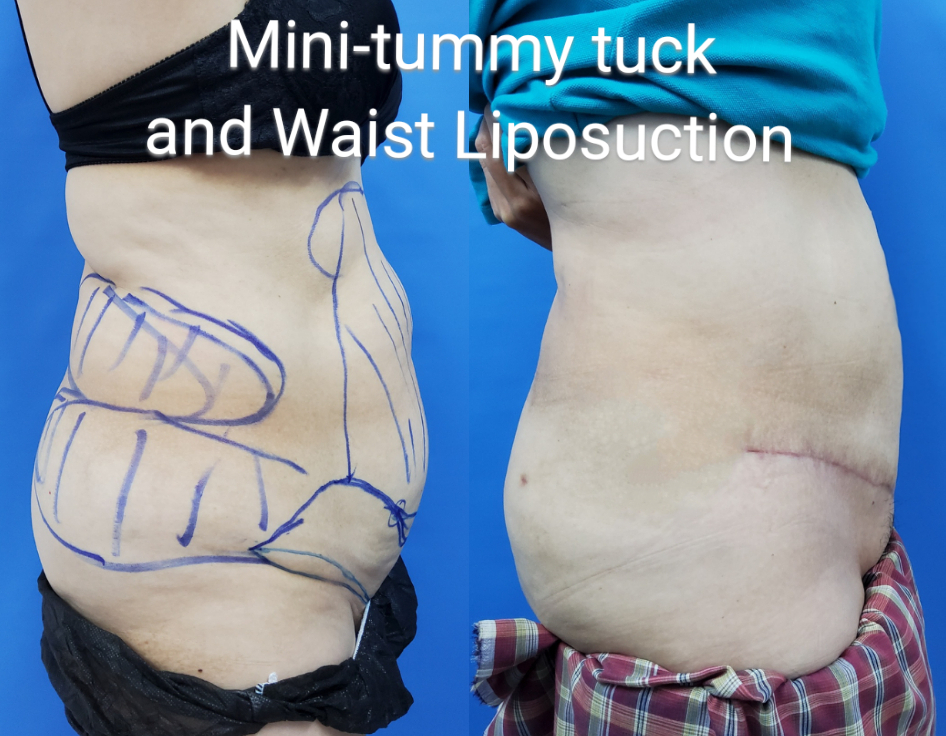
.png)
What are the steps of a tummy tuck procedure?
A tummy tuck procedure includes the following steps:
Step 1 - Anesthesia
Medications are administered for your comfort during the surgical procedures. The choices include intravenous sedation with tumescent or general anesthesia. Your doctor will recommend the best choice for you.
Step 2 – The incision
A full tummy tuck requires a horizontally-oriented incision in the area between the pubic hairline and belly button.
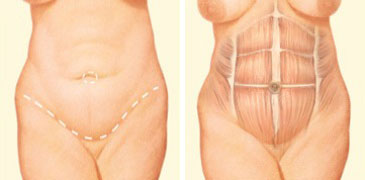
The shape and length of the incision will be determined by the amount of excess skin. Once the abdominal skin is lifted, the underlying weakened and separate abdominal muscles are repaired by plication of rectus muscles. Your waists will be also smaller after muscle plication.
A second incision around the navel is usually necessary for umbilical repostioning and removal of excess skin and fat in the upper abdomen.
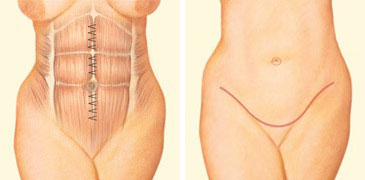
The upper abdominal skin is pulled down like a window shade. The excess skin is trimmed and the remaining skin is sutured together. A new opening for the belly button is created. The belly button is popped through to the surface and sutured into position.
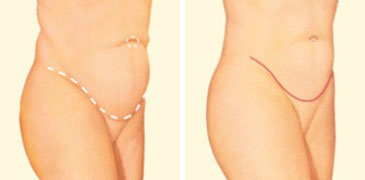
Step 3 – Closing the incisions
Sutures, skin adhesives, tapes or staples close the skin incisions.
Step 4 – See the results
Your tummy tuck will result in a flatter, firmer abdominal contour that is more proportionate with your body type and weight.
What should I expect during my tummy tuck recovery?
1) a compression garment needs to be worn for 2 months to minimize swelling and support your abdomen for tightening effect following surgery.
2) one or two small, thin tubes may be placed under the wound for 2-3 days to drain any excess blood or fluid that may collect. You will be given specific instructions how to care for the surgical site and drains.
3) patients are instructed to bend their trunk forward and slightly bend their knees for the 1st week. Over the next 3 days they may gradually stand straight.
4) patients can drive 2 weeks after the operation. Carrying heavy loads or sit-ups or abdominal exercises is allowed after the first operative month.
5) scar gel sheet (Cicacare) can be placed over the wound for 3 months to prevent scar formation.
6) manual lymphatic drainage will be taught and begun 1 week after surgery to reduce prolonged swollen tummy. The procedure needs to be done twice daily for 1 month.
7) avoid alcohol drinking and smoking for 2 weeks after operation.
What results should I expect after a tummy tuck?
The final results of tummy tuck surgery may be initially obscured by swelling and your inability to stand fully upright until internal healing is complete.
Within a week or two, you should be standing tall and confident in your new slimmer profile. Your tummy tuck will result in a flatter, firmer abdominal contour that is more proportionate with your body type and weight.
Previous abdominal surgery may limit the potential results of a tummy tuck.
Tummy tuck scarring
In women who have undergone cesarean section, the existing scars may be incorporated into the new scar. The tummy tuck scar may take several months to a year to fade as much as it will.